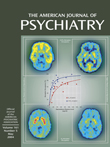The first edition of Neuropsychology of Memory was published in 1984; the second edition was published in 1992. I have them both; they are “must have” books for neuropsychologists at all levels of training and supervising. The books started under the auspices of the late Nelson Butters, with first Larry Squire and then Daniel Schacter becoming involved. I looked forward to seeing the changes to the newest edition because this is a field in which there have been enormous changes and growth in the last 10 years. The most obvious change in the newest edition of the book is the inclusion of several chapters describing memory findings based on functional neuroimaging techniques—as the authors point out in the preface, “In 1992, PET [positron emission tomography] was just being applied to the study of memory for the first time, and fMRI [functional magnetic resonance imaging] was not yet available” (p. xiii). Imagine the new wealth of information available now on the neuropsychology of memory as a result of these advances in technology!
The book is divided into three sections. Part 1 describes studies of normal and abnormal memory. This is the largest section of the book, with 22 chapters reflecting both traditional issues in memory research and new findings based on functional neuroimaging techniques. The first 11 chapters focus primarily on neuropsychological studies of patients with several types of amnesia and memory impairment. Also new to this edition of the book is the inclusion of two chapters on false or illusory memories, a topic of recent interest. The next eight chapters focus on results derived from functional neuroimaging and include event-related-potential, PET, and fMRI studies of episodic and semantic memory encoding and retrieval, working memory, motor skill learning, and visual object priming. Brain regions highlighted include the medial temporal lobe with the hippocampus, frontal lobe, insular cortex, parietal lobe, and related circuitry. The final three chapters more pragmatically focus on clinical interventions, including early identification of Alzheimer’s disease, memory rehabilitation, and the influence of time of testing in memory performance.
Part 2 comprises five chapters examining studies of memory in nonhuman primates, describing recent progress made in the neuropsychology of memory based on studies of monkeys. Several methodologies, including single-cell recording, surgical disconnection, and lesion studies, are used to look at the role of structures within the medial temporal lobe, the role of the anterior temporal cortex, and retrieval of long-term visual memory and the role of the frontal cortex. Other memory systems, such as the capacity to recognize objects as familiar and conditional motor learning, are also examined.
Finally, Part 3 describes recent memory studies using rodents and birds. The section is made up of 11 chapters and builds on techniques devised in the early 1990s, when it became possible to genetically modify small animals, especially rats and mice, to relate specific genes to animal behavior, including memory. The majority of the chapters in this section focus on rodents, and a number of brain regions and neurochemical projections are examined—the hippocampus, fornix, amygdala, orbitofrontal cortex, and neostriatum, as well as cholinergic neurons of the nucleus basalis, medial septum, and vertical limb of the diagonal band and cholinergic projections to the cortex from the basal forebrain. Several memory systems are also explored. The last chapter describes studies of episodic-like memory in birds that use a food-caching paradigm test to examine memory for what, when, and where.
The book covers a wide breadth of topics related to recent work furthering our understanding about the neuropsychology of memory across a diverse range of human and nonhuman populations. The editors have done an excellent job of organizing a large number of chapters falling under the umbrella of “memory,” often from unique and unrelated perspectives, in a way that makes sense, giving the reader an impression of connectedness and coherence even while different memory systems, paradigms, and brain circuitry are being discussed. The historical context provided between sections is very helpful, and a review of what is new since the last edition of this book—functional neuroimaging techniques, genetic modification, inclusion of different memory systems including working memory and false memory studies—makes one realize how much a work in progress our understanding of the neuropsychology of memory is. The book provides an optimistic prospectus about further progress in the field and hope for better and earlier successful interventions. I look forward to seeing how far we have come when the next edition comes out 10 years or so from now!

